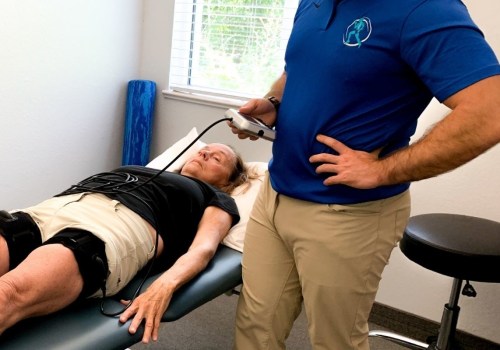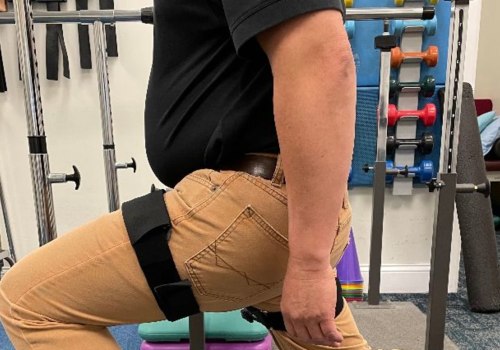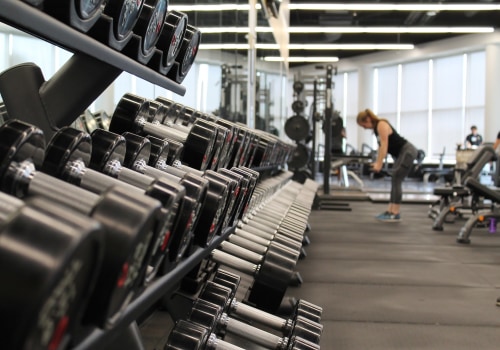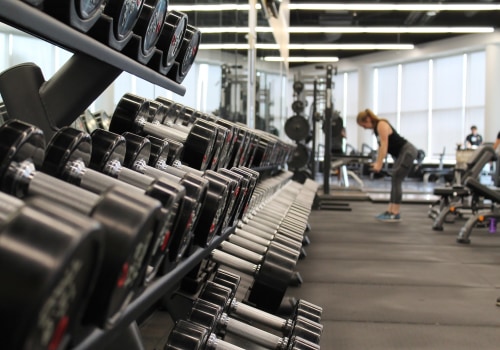Can ptas do blood flow restriction?
Physiotherapists have a firm foundation in anatomy, physiology, therapeutic exercise and the cardiorespiratory system, as ...
Who is bfr good for?
BFR training is effective in both male and female athletes. BFR training produces positive adaptations through individual ...
What is blood flow restriction in physical therapy?
Blood flow restriction (or “BFR”) is a physical therapy modality that restricts blood flow to a muscle. BFR requires...
How many times a week can you use bfr bands?
To begin with, just use bfr training once or twice a week until you feel that your muscles are recovering around 24...
Do you have to be certified to use blood flow restriction?
The short answer is no, you don't need a certification to use blood flow restriction training. The BFR is within the...
Do blood flow restrictions build muscle?
When it comes to genes and hormones directly related to muscle hypertrophy, BFR has been shown to have significant...
What happens when blood flow is restricted to muscles?
Restricting blood flow reduces arterial blood flow to working muscles while obstructing venous return. Under BFR...
Who can benefit from blood flow restriction training?
Blood flow restriction (BFR) training has been reported to have significant benefits in local skeletal muscle, including...
Does bfr cause muscle damage?
Taken together, the results of these studies, together with available case reports, strongly support that BFR-RE can...
Does bfr training hurt?
Pain response to bfr training has been studied less frequently, as most research has focused on single-joint exercises...
Do bfr bands actually work?
Current research suggests that occlusion training, or BFR, may be a safe and effective way to increase muscle strength...
How do you train blood flow restrictions?
Blood flow restriction training is a training method that involves using a pneumonic cuff (such as those used by a doctor ...
Does blood flow restriction bands work?
There is evidence that bfr training can boost athletic training and may even help patients with chronic pain or other...
What are the benefits of bfr bands?
The results of well-done BFR should include increased strength, increased hypertrophy and improved muscle endurance....
Who can benefit from bfr training?
Studies have shown that people with chronic pain, who are recovering from surgery, or who have certain health conditions...
How tight should i wear bfr bands?
For both the upper and lower body, it is suggested that you wrap 4 to 7 out of 10 in tension; 10 being as tight as...
What does restricting blood flow do?
The goal of blood flow restriction training is to restrict venous return and, at the same time, allow arterial flow by...
How do i start a blood flow restriction training?
Blood flow restriction training is a technique that can be used to perform exercises with a. Traditionally, BFR involves...
Is blood flow restriction training safe?
Although most research on LL-BFR training has examined healthy populations, clinical applications are emerging. In...
Can you do blood flow restriction training?
To perform blood flow restriction training, you will need a device to, you guessed it, restrict blood flow to the limb...
Are blood flow resistance bands safe?
BFR training bands are only one or two inches wide, so they put pressure on a small area of the muscle. Its use is risky, ...
What is the point of blood flow restriction training?
Blood flow restriction training can help patients gain greater gains in strength training while lifting lighter loads,...
What is the purpose of blood flow restriction?
Blood flow restriction training can help patients gain greater gains in strength training while lifting lighter loads,...
What is it called when you restrict blood flow?
Occlusion training is also called blood flow restriction (BFR) training. The goal is to reduce the time it takes to build ...
How does blood flow restriction build muscle?
BFR makes muscles work harder Bfr elastic bands partially restrict the return of venous blood (oxygen-deficient blood...
How long should you wear bfr bands?
This will help maintain high muscle growth and at the same time give you plenty of time for cardio exercises,...
Are blood flow restrictions bad?
Blood flow restriction (BFR) exercise is recognized as a beneficial strategy to increase skeletal muscle mass and...
Are blood flow restrictions effective?
BFR training has been shown to be useful and effective in certain populations, especially in the post-injury...
Can you do blood flow restriction training everyday?
Aerobic exercise, such as walking and biking, usually doesn't cause muscle growth. Low-intensity occlusion aerobic...
How often should you use bfr bands?
To begin with, just use bfr training once or twice a week until you feel that your muscles are recovering around 24...
Does bfr bands really work?
There is evidence that bfr training can boost athletic training and may even help patients with chronic pain or other...
Why does blood flow restriction training work?
BFR makes muscles work harder Bfr elastic bands partially restrict the return of venous blood (oxygen-deficient blood...
How wide should bfr bands be?
The perfect BFR band should be between 1 and 2.5 inches wide and should not be too tight. On a scale of 1 to 10, with 10...
What does blood flow restriction feel like?
Using blood flow restriction often feels like doing a very strenuous workout. As the cuff inflates, you will naturally...
Is bfr training necessary?
BFR training is a useful option to consider if you ever need to heal or strengthen after an injury. From personal...
Who should not do bfr training?
People with a family or personal history of bleeding disorders, or level 1 hypertension, may not be safe to complete a...
How do you do blood flow restrictions?
The cuff is inflated to restrict 50% of arterial blood flow and 100% of venous flow. The cuff is inflated to restrict 80% ...
How long can you wear bfr cuffs?
BFR can be applied during aerobic exercise and, in research, has typically been applied when walking or cycling. However, ...
Does blood flow affect muscle size?
This contributes to muscle hypertrophy along with cellular swelling and changes in metabolites, which is known as...
Can pta do blood flow restrictions?
Physiotherapists have a firm foundation in anatomy, physiology, therapeutic exercise and the cardiorespiratory system, as ...







































